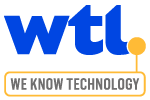For most businesses, virtualisation began as a way to optimise on-prem server hardware, maximising resource capital spending and overcoming the physical limitations of the data centre. The limitless nature of cloud platforms has changed the game, allowing applications and services to draw on all the resources they need.
However, infinite scalability has created a new challenge: sticker shock. Many of the early savings have evaporated, leaving businesses spending much more than expected on their hosted applications.
Time to modernise
In most cases, sticker shock is caused by outdated design of both applications and infrastructure. One way to bring costs back under control is to modernise the virtualisation layer – and this is where Oracle KVM excels.
Templates for efficiency
Virtual machine installation and configuration can be time and resource-intensive. Oracle Linux KVM allows users to create VM templates in advance.
Templating significantly reduces deployment times as most of the required configuration is already completed. It also means that VMs are configured to a specific standard, making them easier to manage and maintain, and reducing ongoing maintenance costs.
Template VMs can be deployed within minutes, allowing users to bring new products and services to market faster.
Optimised software licensing
Enterprise applications are typically licensed by CPU core. With some platforms, this may see subscribers paying to license CPU cores simply because they exist, even if they are not being used.
Oracle Linux KVM solves this problem by allowing administrators to ‘pin’ a VM to specific physical CPU cores. Pinning ensures your business never pays for anything it isn’t using – which could be particularly important when operating in a virtualised cloud environment.
Reducing downtime
Mobility is one of the huge benefits of virtualisation, allowing you to move machines across infrastructure because it is not tied to physical hardware. However, the underlying infrastructure also needs to be updated to patch vulnerabilities and the like.
Oracle Linux KVM has been designed to simplify transport, allowing live migrations for virtual disks of running virtual machines. With Ksplice integration, you can patch kernel, QEMU, and user space libraries with no downtime or service interruption.
These enhancements improve availability and reduce downtime and recovery costs.
Automate as standard
Repetitive low-level tasks are soul-destroying – and costly. Your operations team is wasted on administrative tasks that draw resources away from strategic projects.
You can solve this problem using the Oracle Linux KVM Rest API to build automation for common admin tasks. Automation is faster and more accurate, increasing ops team productivity and reducing the risk of misconfigurations and errors. Greater accuracy and efficiency are proven to reduce virtualisation costs.
Ask us for help
Modernising your virtualisation platform can be daunting – but WTL is here to help. Give us a call to discuss your virtualisation costs – and how we can help you reduce them.
